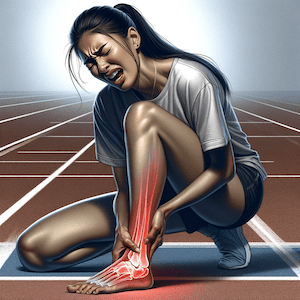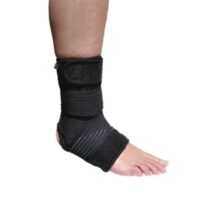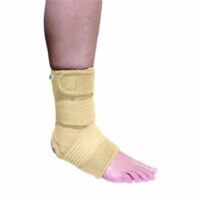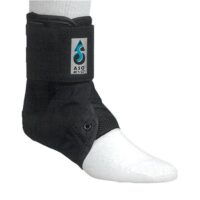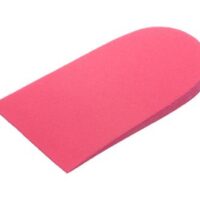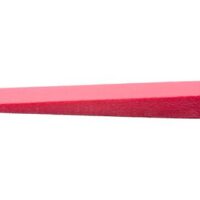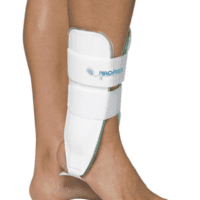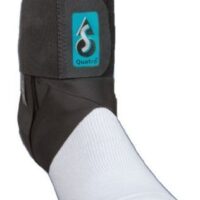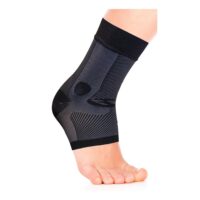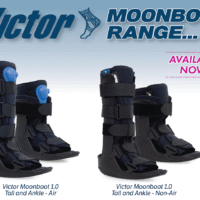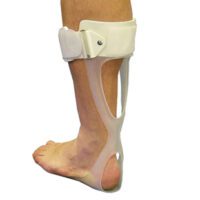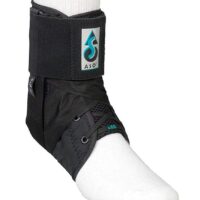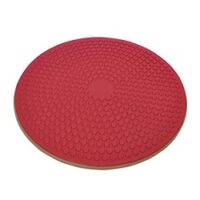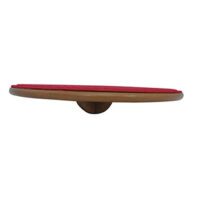Sprained Ankle
Article by John Miller

Sprained Ankle
Recovery from a Physiotherapist’s Perspective
A sprained ankle, a common but often misunderstood injury, affects both athletes and the general population. As a physiotherapist, my goal is to guide you through understanding the mechanics, symptoms, and effective treatment of this injury.
The Mechanics Behind the Injury
An ankle sprain occurs when the ligaments, the strong fibrous tissues connecting bones, are overstretched. Typically resulting from accidents, uneven terrain, or unsuitable footwear, sprains can range from mild to severe, with potential bone fractures.
Identifying the Symptoms
Symptoms vary from mild pain and swelling to severe discomfort, bruising, and even a popping sound at the injury moment. Difficulty in weight-bearing or walking normally often necessitates temporary support, such as crutches or a supportive boot.
The Importance of an Accurate Diagnosis
Proper diagnosis involves a detailed examination, assessing tenderness, swelling, and motion range. Sometimes, X-rays or MRI scans are necessary to rule out fractures and assess soft tissue damage.
Which Ligaments Are Involved?
Most ankle sprains involve the lateral ligaments on the ankle’s outside, including the anterior talofibular, calcaneofibular, and posterior talofibular ligaments. The medial deltoid ligament and, in high ankle sprains, the tibia and fibula ligaments can also be involved, leading to more complex injuries.
The Consequences of Misdiagnosis
Misdiagnosis can lead to chronic ankle instability and potentially require intensive treatment or surgery. Thus, accurate identification and treatment planning are crucial.
Physiotherapy Treatment for a Sprained Ankle
Immediate Measures for Recovery
- Managing Pain and Inflammation: Rest, ice, compression, and elevation (RICE) are vital first steps. Ankle strapping, moon boots, or braces may be prescribed.
Restoring Mobility
- Gentle Exercises: As inflammation reduces, tailored exercises under physiotherapist supervision aim to restore full motion range.
Strengthening the Area
- Targeted Exercises: These focus on muscles around the ankle and calf to improve stability and prevent future injuries, adjusted in intensity to match recovery stages.
Enhancing Proprioception and Balance
- Proprioceptive Training: Critical for regaining ankle stability, these exercises improve the body’s awareness of its position in space.
Preparing for Athletic Demands
- Sport-Specific Training: For athletes, treatment includes exercises tailored to the dynamic demands of their sport.
The Road Back to Full Activity
- Gradual Training Resumption: Monitoring and gradually increasing exercise intensity ensures a successful transition back to activities.
Final Stages: Return to Competition
- Full Recovery Preparation: The focus is on regaining pre-injury strength, function, and flexibility.
Recovery Timelines for Sprained Ankles
Recovery is highly individual, with ligaments typically healing within six weeks. However, full recovery depends on restoring strength, motion, and function. Mild grade I injuries will rehabilitate quicker than Grade III ruptures that may require longer immobilisation or ligament reconstruction surgery.
The Risks of Neglect
Untreated sprains can lead to chronic ankle issues. Adhering to a structured physiotherapy plan is essential to avoid long-term problems.
Conclusion
A sprained ankle demands prompt and effective physiotherapy treatment. Early consultation with a physiotherapist ensures a customised treatment plan, leading to quicker recovery and minimising future ankle issues. Remember, each ankle sprain is unique; professional guidance is key to a successful recovery.
New Research Insights
Recent studies emphasise the importance of tailored rehabilitation programs. According to a 2022 study, exercise based physiotherapy significantly enhances recovery outcomes, reducing the risk of re-injury and chronic instability. The integration of balance and proprioceptive training has been highlighted as particularly effective in promoting long-term ankle health.
What to do?
If you’re experiencing symptoms of a sprained ankle, don’t hesitate to seek professional advice. As a physiotherapist, I can provide you with a tailored treatment plan, ensuring the best possible outcome for your recovery. Remember, timely and appropriate treatment is the key to getting back on your feet confidently and safely.
Rochedale - Call 38410277
Book Online: RochedaleSalisbury - Call 32751044
Book Online: SalisburySandgate - Call 32691122
Book Online: SandgateRelated Articles
- Ankle Injury Treatment: Discover the various treatment methodologies for ankle injuries, including physiotherapy techniques. It expands on the treatment section of the original article.
- Preventing Ankle Injuries: Tips on how to prevent ankle injuries in sports and daily activities. Prevention is crucial for those who’ve previously experienced a sprained ankle or are at high risk.
- Sports Injuries and Physiotherapy: Explore how physiotherapy can address various sports injuries, including ankle sprains. This is particularly relevant for the athletic readership.
- Balance Exercises: Find out about exercises that improve balance, which is essential for ankle stability post-injury. This supports the section on proprioceptive training and balance enhancement.


